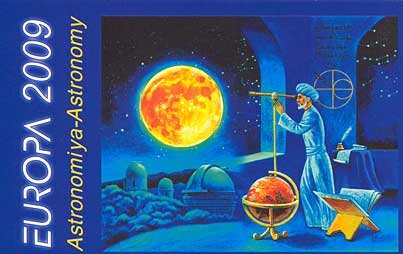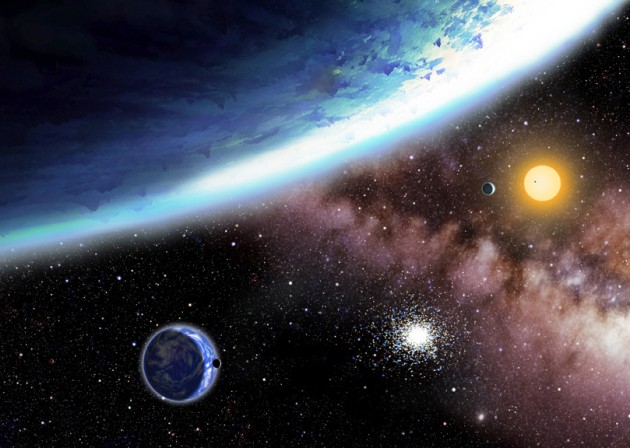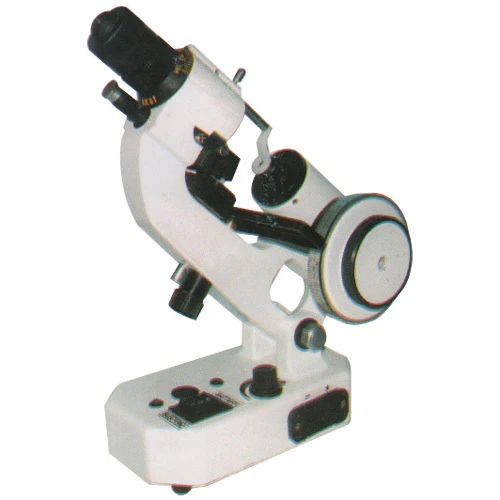Booklet: Nasiruddin Tusi + Observatory, Shemakhi Region (Azerbaijan 2009)
Nasiruddin Tusi + Observatory, Shemakhi Region (Azerbaijan 2009)
13 April (Azerbaijan ) within release Europa (C.E.P.T.) 2009 - Astronomy goes into circulation Booklet Nasiruddin Tusi + Observatory, Shemakhi Region face value 3.20 Azerbaijani manat
| Booklet Nasiruddin Tusi + Observatory, Shemakhi Region in catalogues | |
|---|---|
| Michel: | Mi: AZ 758D-759DMH |
Booklet is square format.
Also in the issue Europa (C.E.P.T.) 2009 - Astronomy:
- Souvenir Sheet - First Telescope Invented by Galileo Galilei, 1609 face value 1;
- Stamp - Nasiruddin Tusi (Astronomer) face value 20;
- Stamp - Nasiruddin Tusi (Astronomer) face value 20;
- Booklet Pane - Nasiruddin Tusi + Observatory, Shemakhi Region face value 3.20;
- Booklet - Nasiruddin Tusi + Observatory, Shemakhi Region face value 3.20;
- Stamp - Observatory, Shemakhi Region face value 60;
- Stamp - Observatory, Shemakhi Region face value 60;
- Full Pane - Nasiruddin Tusi (Astronomer) face value 10*20;
- Full Pane - Observatory, Shemakhi Region face value 10*60;
Booklet Nasiruddin Tusi + Observatory, Shemakhi Region it reflects the thematic directions:
Astronomy is a natural science that studies celestial objects and the phenomena that occur in the cosmos. It uses mathematics, physics, and chemistry in order to explain their origin and their overall evolution. Objects of interest include planets, moons, stars, nebulae, galaxies, meteoroids, asteroids, and comets. Relevant phenomena include supernova explosions, gamma ray bursts, quasars, blazars, pulsars, and cosmic microwave background radiation. More generally, astronomy studies everything that originates beyond Earth's atmosphere. Cosmology is a branch of astronomy that studies the universe as a whole. .
A globe is a spherical model of Earth, of some other celestial body, or of the celestial sphere. Globes serve purposes similar to maps, but, unlike maps, they do not distort the surface that they portray except to scale it down. A model globe of Earth is called a terrestrial globe. A model globe of the celestial sphere is called a celestial globe
The Moon is Earth's only natural satellite. It orbits at an average distance of 384,400 km (238,900 mi), about 30 times the diameter of Earth. Tidal forces between Earth and the Moon have over time synchronized the Moon's orbital period (lunar month) with its rotation period (lunar day) at 29.5 Earth days, causing the same side of the Moon to always face Earth. The Moon's gravitational pull – and to a lesser extent, the Sun's – are the main drivers of Earth's tides.
An observatory is a location used for observing terrestrial, marine, or celestial events. Astronomy, climatology/meteorology, geophysics, oceanography and volcanology are examples of disciplines for which observatories have been constructed
An optical instrument is a device that processes light waves (or photons), either to enhance an image for viewing or to analyze and determine their characteristic properties. Common examples include periscopes, microscopes, telescopes, and cameras.
Outer space (or simply space) is the expanse that exists beyond Earth's atmosphere and between celestial bodies. It contains ultra-low levels of particle densities, constituting a near-perfect vacuum of predominantly hydrogen and helium plasma, permeated by electromagnetic radiation, cosmic rays, neutrinos, magnetic fields and dust. The baseline temperature of outer space, as set by the background radiation from the Big Bang, is 2.7 kelvins (−270 °C; −455 °F)






